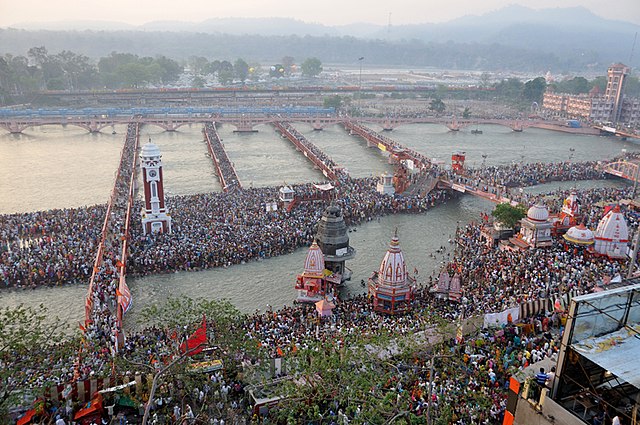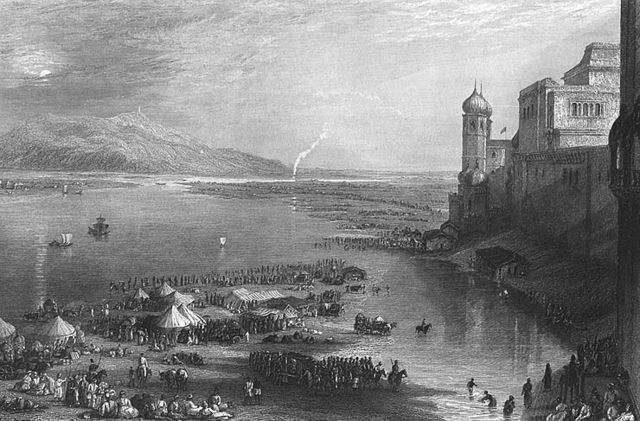Haridwar Kumbh Mela is a mela, associated with Hinduism and held in the city of Haridwar, India held every 12 years. The exact date is determined according to Hindu astrology: the Mela is held when Jupiter is in Aquarius and the Sun enters Aries. The event possesses deep religious significance to Hindus as well as other spiritual seekers. Historically, it was an important commercial event and was attended by merchants from as far as Arabia.
Pilgrims gather for the third Shahi Snan ("royal bath") at Har ki Pauri in Haridwar on 14 April 2010
Haridwar Kumbh Mela by the English painter J. M. W. Turner. Steel engraving, 1850s.
Naga Sadhus at the 1998 Kumbh Mela
Bathing ghat on the Ganges during the 2010 Kumbh Mela
Mela is a Sanskrit word meaning "gathering" or "to meet" or a "fair". It is used in the Indian subcontinent for all sizes of gatherings and can be religious, commercial, cultural or sport-related. In rural traditions melas or village fairs were of great importance. This led to their export around the world by South Asian diaspora communities wishing to bring something of that tradition to their new countries.
A procession of Akharas marching over a temporary bridge over the Ganges river, Kumbh Mela at Allahabad, 2001





